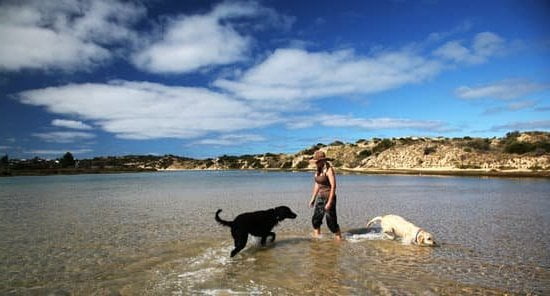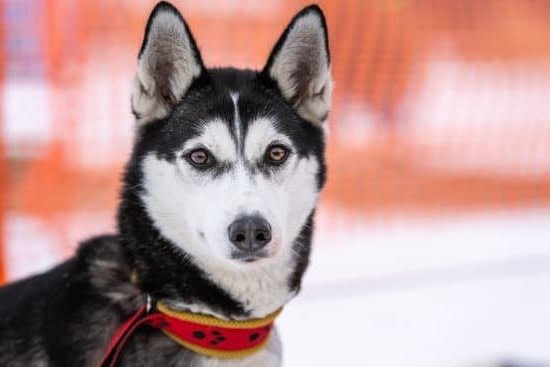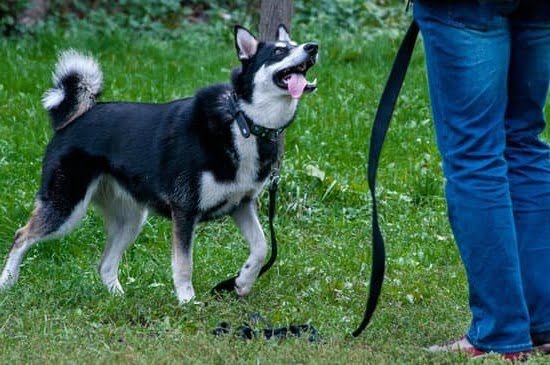Search and rescue dogs play a crucial role in locating and rescuing missing or trapped individuals in various situations. But who trains search and rescue dogs to be so effective in their work?
In this article, we will explore the history of search and rescue dog training, the qualities required for successful trainers, specialized training techniques, organizations involved in training, the importance of ongoing education for these dogs, successful stories, and emerging trends and technologies shaping the future of search and rescue dog training.
The use of dogs in search and rescue operations dates back centuries. Over time, their capabilities have been honed through careful breeding and rigorous training. Today, search and rescue dogs are indispensable assets in emergency response efforts.
Successful trainers of search and rescue dogs possess certain essential qualities that enable them to bring out the best in their canine partners. The bond between a trainer and their dog is crucial, as is patience, dedication, adaptability, and a deep understanding of canine behavior. Trainers must also have a solid knowledge of specialized training techniques tailored to specific search and rescue scenarios.
The History of Search and Rescue Dog Training
Search and rescue dog training has a long and storied history, dating back to ancient times. The use of dogs in search and rescue missions can be traced back to the Roman Empire, where they were trained to find wounded soldiers on the battlefield. In more recent history, search and rescue dogs played a crucial role in locating survivors during natural disasters such as earthquakes, hurricanes, and avalanches.
Throughout the years, search and rescue dog training has evolved significantly. What once started as informal training by individual owners has now become a specialized field with standardized techniques and practices. Today, search and rescue dog training is conducted by professional trainers who are dedicated to molding these animals into valuable assets for search and rescue operations.
Over time, various organizations and agencies have emerged to oversee the training of search and rescue dogs. These include government agencies such as FEMA (Federal Emergency Management Agency), nonprofit organizations like the National Disaster Search Dog Foundation, and specialized K-9 units within law enforcement departments. These institutions play a crucial role in setting standards for training programs and certifying both dogs and their handlers.
- Ancient Use of Dogs in Search and Rescue
- Evolution of Formal Search and Rescue Dog Training
- Oversight by Organizations and Agencies
By understanding the history of search and rescue dog training, we can appreciate how far this discipline has come while also recognizing the important individuals and organizations who have contributed to its advancement over time. As we delve deeper into this field, it becomes evident that the history of search and rescue dog training is rich with tradition yet constantly evolving to meet the ever-changing demands of modern society.
Qualities of a Successful Search and Rescue Dog Trainer
Being a successful search and rescue dog trainer requires a unique set of qualities and skills. Training these remarkable animals is not for everyone, and only individuals with certain attributes are suited for this challenging yet rewarding task. Here are the key qualities that make a successful search and rescue dog trainer:
- Patient: One of the most important qualities of a successful search and rescue dog trainer is patience. Dogs, just like humans, have their own pace of learning, and it takes time to train them effectively.
- Compassionate: A successful trainer must have a deep sense of compassion for both the dogs they train and the people they aim to help. This empathy helps in understanding the needs and behaviors of the dogs, as well as building strong bonds with them.
- Resilient: Search and rescue work can be physically and emotionally demanding. Trainers must possess resilience to cope with the challenges that come with training these specialized dogs.
In addition to these qualities, successful search and rescue dog trainers also need to have excellent communication skills, a deep understanding of canine behavior, physical fitness, problem-solving abilities, as well as adaptability.
Organizations and Agencies Involved in Search and Rescue Dog Training
When it comes to who trains search and rescue dogs, there are several organizations and agencies involved in this important task. These entities play a crucial role in providing support, resources, and expertise necessary for training highly skilled search and rescue dogs. Some of these organizations include:
- National Association for Search And Rescue (NASAR): NASAR is dedicated to providing training opportunities for search and rescue professionals including K9 handlers through certification programs, seminars, workshops
- American Kennel Club (AKC): The AKC offers training resources for search and rescue dog handlers including guidelines on developing effective training programs
- Federal Emergency Management Agency (FEMA): FEMA provides support for search and rescue teams by offering training programs specifically designed for urban search and rescue canines
These organizations not only focus on training dogs but also provide valuable education opportunities for individuals interested in becoming search and rescue dog trainers or handlers. They play an essential role in shaping the future of search and rescue dog training through their extensive expertise in this field.
Specialized Training Techniques for Search and Rescue Dogs
Scent Detection Training
One of the most important specialized training techniques for search and rescue dogs is scent detection training. Search and rescue dogs are trained to use their keen sense of smell to locate missing persons in various environments, including wilderness, urban, and disaster settings. Trainers utilize positive reinforcement methods to teach dogs how to signal when they detect the scent of a human in the area. This type of training requires patience, consistency, and a deep understanding of canine behavior.
Agility and Obedience Training
In addition to scent detection training, search and rescue dogs undergo agility and obedience training to ensure they can navigate through different terrains and follow commands effectively. Agility training helps dogs develop the physical skills needed to maneuver through obstacles such as rubble or rough terrain during a search operation. Obedience training focuses on teaching dogs to respond promptly to their handlers’ cues, which is crucial for maintaining control in high-stress situations.
Socialization and Environmental Exposure
Another essential aspect of specialized training for search and rescue dogs is socialization and exposure to various environments. Trainers introduce dogs to different surfaces, sounds, smells, and situations they may encounter during actual search missions. This exposure helps desensitize the dogs to potential stressors and build their confidence in challenging environments. Additionally, socialization with other humans, animals, and fellow search and rescue team members is crucial for ensuring that the dogs remain focused and cooperative during operations.
These specialized training techniques require expertise, dedication, and a deep understanding of both canine behavior and search and rescue operations. Therefore, it is essential for trainers
Organizations and Agencies Involved in Search and Rescue Dog Training
Organizations and agencies play a crucial role in the training of search and rescue dogs. These entities provide the structure and resources necessary to ensure that both the dogs and their trainers are properly equipped for their life-saving work.
Non-Profit Organizations
Non-profit organizations such as the National Search Dog Alliance (NSDA) and Search and Rescue Dogs of the United States (SARDUS) are dedicated to promoting training standards, providing certifications, and supporting handlers in search and rescue efforts. These groups also offer resources for individuals interested in becoming search and rescue dog trainers, including workshops, seminars, and networking opportunities.
Government Agencies
Government agencies like FEMA (Federal Emergency Management Agency) often have specialized K-9 units that are trained for disaster response. These agencies may conduct their own training programs or work in collaboration with non-profit organizations to ensure that their search and rescue dog teams are well-prepared for any emergency situation.
Law Enforcement Agencies
Many law enforcement agencies have their own search and rescue K-9 units, which require specialized training. These units may partner with non-profit organizations or government agencies to ensure that their teams receive the necessary ongoing education and support to effectively carry out their duties.
Overall, it is these organizations and agencies who train search and rescue dogs. They play a vital role in setting standards, providing resources, and ensuring that both dogs and handlers receive the training they need to save lives during critical situations.
The Importance of Ongoing Training and Education for Search and Rescue Dogs
Search and rescue dogs play a crucial role in locating missing persons, disaster response, and other emergency situations. These highly skilled canines undergo intensive training to develop their search abilities, agility, and obedience. However, the training process does not stop once a search and rescue dog has completed its initial training. Ongoing education and training are essential for maintaining their skills and ensuring their effectiveness in the field.
One of the key aspects of ongoing training for search and rescue dogs is the reinforcement of their core skills. This includes regular practice in tracking scents, navigating various terrains, and responding to different commands. By consistently honing these essential abilities, search and rescue dogs are better prepared to handle real-life scenarios where their skills are needed.
In addition to skill reinforcement, ongoing education also involves staying current with the latest techniques and technologies in search and rescue. This may include learning about new scent detection methods, advances in first aid application for canine responders, or how to navigate evolving communication systems used in emergency response. This continuing education ensures that search and rescue dogs remain at the forefront of their field.
| Search & Rescue Dog Training | Ongoing Training Importance |
|---|---|
| Reinforcement of core skills | Ensures effectiveness in the field |
| Staying current with latest techniques | Maintains readiness for real-life scenarios |
Successful Stories of Search and Rescue Dogs and Their Trainers
Search and rescue dogs are an invaluable part of any search and rescue team. These specially trained canines work alongside their handlers to locate missing persons, whether in natural disasters or urban settings. The bond between a search and rescue dog and their trainer is crucial to their success in the field, and there are countless inspiring stories of their achievements.
One notable example is the story of Bretagne, a golden retriever who worked at Ground Zero after the September 11 attacks. Bretagne and her handler, Denise Corliss, spent days searching through the rubble for survivors, providing comfort to first responders and families alike. This heartwarming story showcases the dedication and resilience of both the dog and her trainer in the face of tragedy.
Another inspiring tale is that of Trakr, a German Shepherd who was credited with locating the last survivor in the rubble of the World Trade Center following 9/11. Trakr’s handler, James Symington, worked tirelessly alongside his canine partner in challenging conditions to bring closure to families during a devastating time.
These stories serve as a testament to the immense skill and dedication required from both search and rescue dogs and their trainers. Their unwavering commitment to saving lives in times of crisis makes them true heroes.
| Search and Rescue Dog | Trainer |
|---|---|
| Bretagne | Denise Corliss |
| Trakr | James Symington |
The Future of Search and Rescue Dog Training
As search and rescue operations continue to evolve, the future of search and rescue dog training is also taking a new turn with emerging trends and technologies. With the advancement in technology, there are now more sophisticated tools and equipment that aid in the training process. From GPS tracking systems to drones, trainers are integrating these modern tools into their programs to enhance the effectiveness of their canine teams.
One of the emerging trends in search and rescue dog training is the use of virtual reality simulation. This innovative approach allows dogs to be exposed to various scenarios in a controlled environment, preparing them for real-life search and rescue missions.
Additionally, there is a growing emphasis on utilizing genetic testing to identify potential search and rescue dog candidates. By understanding the genetic predisposition of certain breeds, trainers can select dogs with a higher likelihood of success in this field.
Furthermore, developments in communication technology have enabled trainers to establish more effective means of coordination during search and rescue missions. With the use of communication devices such as two-way radios and satellite phones, handlers can maintain constant contact with their canine partners even in remote or challenging terrains. These technologies not only improve safety but also streamline the overall search and rescue process.
In conclusion, as we look towards the future of search and rescue dog training, it is evident that advancements in technology will play a significant role in shaping the landscape of this critical field. By embracing these emerging trends and technologies, those involved in search and rescue operations can further optimize their training methods, ultimately enhancing the capabilities of their canine teams.
As we move forward, it is essential for organizations and agencies involved in search and rescue dog training to stay abreast of these developments, ensuring that they are equipped to meet the evolving demands of this vital role.
Frequently Asked Questions
How Do They Train Dogs to Search and Rescue?
Dogs trained for search and rescue are initially taught basic obedience and socialization. They then go through specific training to learn how to track scents, locate people in various environments, and signal their findings to their handlers.
What Age Do Search and Rescue Dogs Start Training?
Search and rescue dogs typically start training as young as 12-18 months old. This is when they have reached a level of physical and mental maturity to handle the demands of training. The specific age can vary depending on the individual dog and the specific program or organization.
How Do I Become a FEMA Canine Handler?
To become a FEMA canine handler, you must first become a certified search and rescue handler with a qualified organization. Then you can apply to FEMA’s Urban Search and Rescue task forces, which have their own requirements for canine handlers. This usually involves passing tests of skill, knowledge, and physical ability, as well as completing certain training courses.

Welcome to the blog! I am a professional dog trainer and have been working with dogs for many years. In this blog, I will be discussing various topics related to dog training, including tips, tricks, and advice. I hope you find this information helpful and informative. Thanks for reading!





